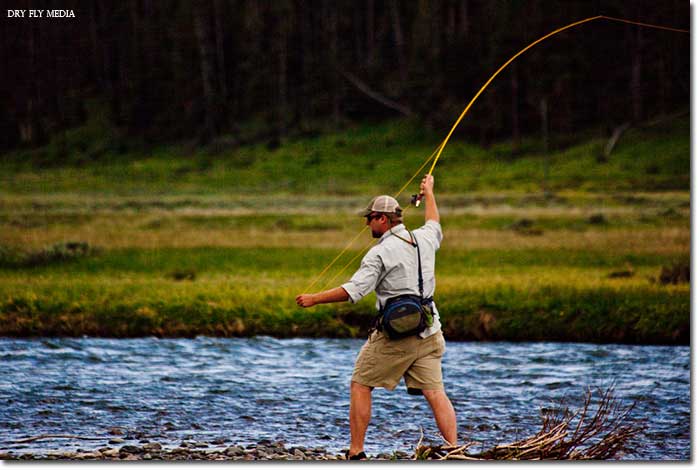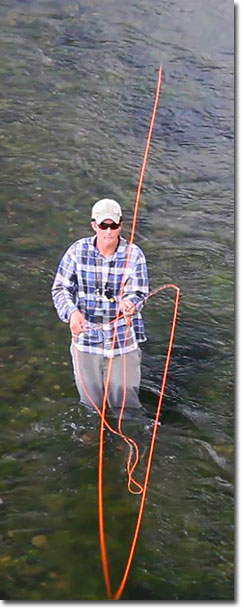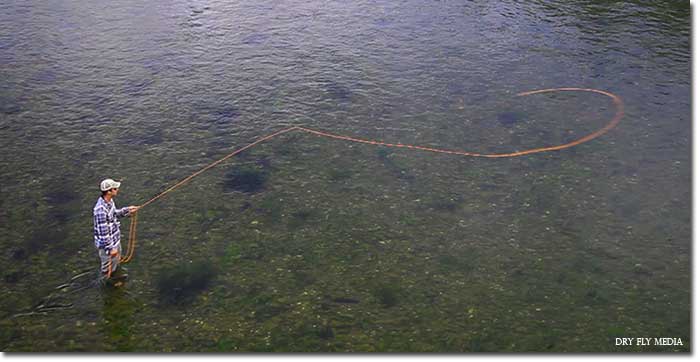
Watch any skilled fisher working the crick, creek, river or flat, whether he be on foot, in the bow of the drifter or perched on the casting deck, and you’ll spy a symphony of motion geared to fling a lump of feather and fur effortlessly to a watery target the size of a sandwich.
Far, far from a casting master myself, I’ve fished enough to recognize a maestro with a fly line when I see one.
 Looking at a crackerjack caster through the lens of a camera allows us peek like a voyeur at the whooshing dance a fly line completes with every casting stroke.
Looking at a crackerjack caster through the lens of a camera allows us peek like a voyeur at the whooshing dance a fly line completes with every casting stroke.
A guy we’ve fished with a bit, christened the ‘Pedantic Ass’ for a number of reasons, fancies himself (among other things) an armchair mathematician and theoretical physicist. Jake and I once spent an endless afternoon rowing him down the North Fork of the Flathead while he droned on and on about parallel universes, string theory and his insistence that God is revealed only to superior intellects who understand higher mathematical constructs.
All the while he missed one of my favorite applications of practical physics right under his nose – the rolling arc of a dancing fly line.
Physics buffs take note. A fly line is nothing but a 90-foot ‘string’ built with a core surrounded by a tapering, mystical polymer coating (marketing hype aside) that transmits energy applied from a long lever (that bamboo, glass or graphite stick you’re thinking about holding right now) with either the finesse to mimic a tiny insect weighing fractions of an ounce or the power to heave a tarpon fly the size of a Taco Bell burrito.
A fly line in motion is my kind of string theory.
(And despite the Pedantic Ass’ supposition, I’d venture God is more often revealed to men and women standing hip deep in flowing freestones flinging fly lines to and fro than to uber-intellectuals contemplating obscure mathematical constructs in their study. I’ll never answer that question with certainty, as I’d rather work on my double-haul this evening than relearn calculus.)
I like fly line physics.


